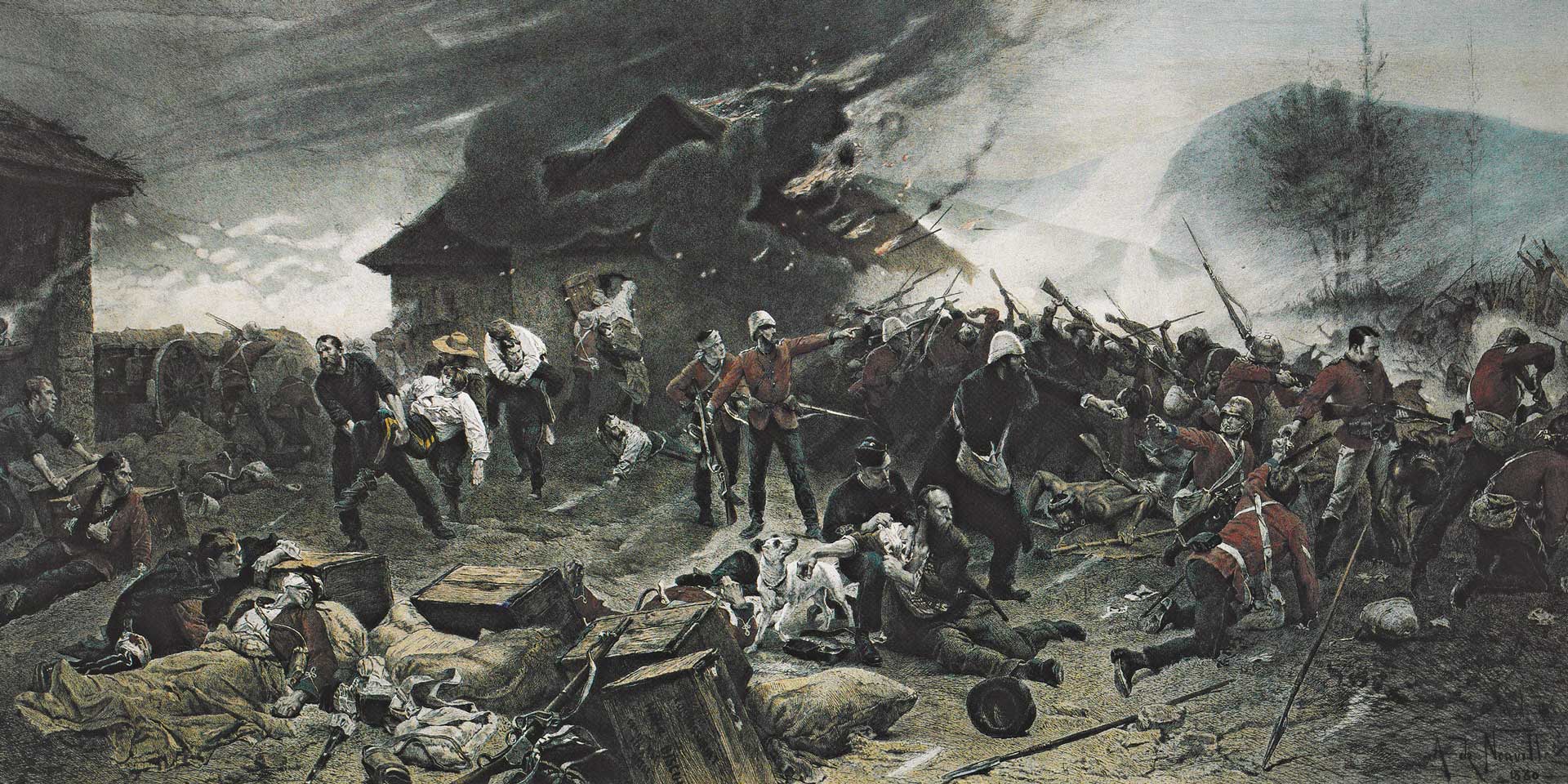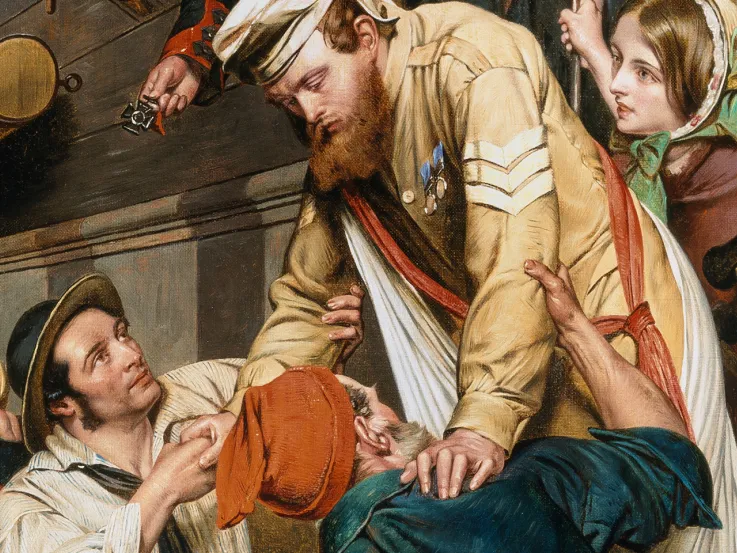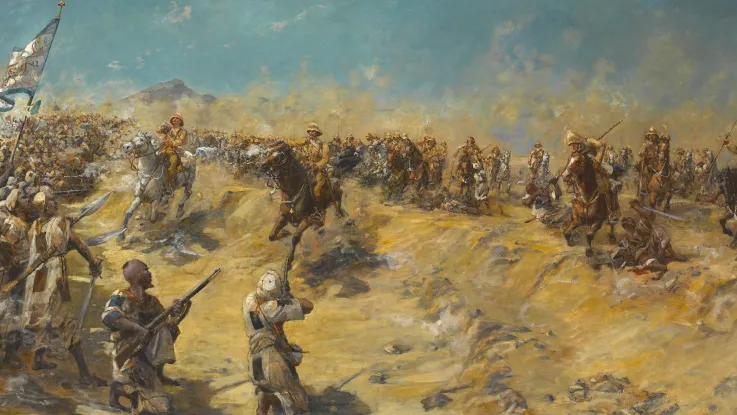Military Art of the Zulu War

Ian Knight examines artistic representations of the Zulu War of 1879 and how they continue to influence our understanding of the conflict today.
The Zulu War was fought between the British Empire and the Zulu Kingdom in the furthest reaches of southern Africa. The Zulus demonstrated remarkable resilience, and the war became notable for its ferocious battles. Today, the conflict holds a prominent place in Britain’s collective memory of colonial warfare.
Artists of the time attempted to influence opinion of the Army and its exploits against the Zulus. Charles Edwin Fripp’s romanticised depiction of the British defeat at Isandlwana failed to capture the Victorian public’s imagination. But paintings of the successful defence of Rorke’s Drift by Lady Elizabeth Butler and Alphonse de Neuville proved more popular. Butler’s piece in particular attracted a ‘great crush’ of onlookers at the Royal Academy of Arts in 1881.
As part of our Victorian Soldier Spotlight, historian Ian Knight will examine the different ways that artists of the era portrayed the Zulu War, showing how their work has helped these events to enter British folklore.
About the speaker
Ian Knight is a historian, author and leading authority on the Zulu War. His book, ‘The National Army Museum Book of the Zulu War’, was a joint winner of the Royal United Services Institute Award for Best Military History Book. His most recent publication, ‘Warriors in Scarlet: The Life and Times of the Last Redcoats’ received the Military History Matters Gold Award for Best Military History in 2025.



